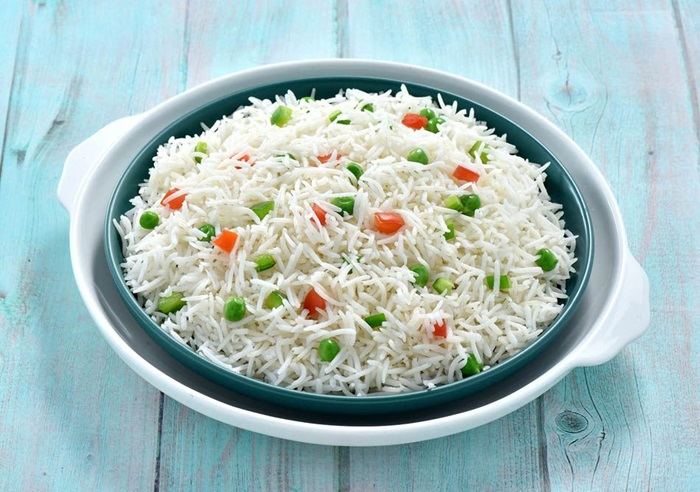Basmati rice is a long-grain variety that has been enjoyed for centuries in various cultures, especially in South Asian cuisine. For individuals with diabetes, the question of whether they can enjoy basmati rice often arises. This article delves into the suitability of basmati rice for diabetics, exploring its nutritional benefits, cooking methods, and cultural significance. By understanding how to incorporate this rice into a diabetic-friendly diet, one can enjoy its unique flavor while maintaining stable blood sugar levels.
Nutritional Profile of Basmati Rice
Nutritional Benefits: Basmati rice has several attributes that make it a better option for diabetics compared to other types of white rice. It has a lower glycemic index (GI), meaning it causes a slower rise in blood sugar levels after consumption. Additionally, it contains fewer carbohydrates than many other rice varieties, which helps in managing blood glucose levels more effectively.
Comparison with Other Rices: When compared to regular white rice, basmati rice has a GI of around 50-58, whereas standard white rice can have a GI as high as 73. This lower GI means that basmati rice digests more slowly, leading to a more gradual release of sugars into the bloodstream. Brown basmati rice, which retains the bran layer, offers even more fiber and nutrients, making it an even better choice for those watching their carb intake.
Cooking Methods for Diabetics
Preparing Basmati Rice: The way basmati rice is cooked can influence its impact on blood sugar levels. Cooking it in a larger ratio of water to rice can help reduce starch content, resulting in a less sticky texture and a lower glycemic response. Adding ingredients like lemon juice or vinegar during cooking can also lower the GI further.
Ingredients Needed for Healthy Basmati Rice
- 1 cup basmati rice
- 2 cups water
- Juice of half a lemon or 1 tablespoon vinegar
- 1 teaspoon salt (optional)
- 1 tablespoon olive oil (optional)
Step-by-Step Process: Rinse the basmati rice under cold water until the water runs clear. In a medium saucepan, combine the rinsed rice, water, lemon juice or vinegar, salt, and olive oil if using. Bring to a boil over high heat. Once boiling, reduce the heat to low, cover, and simmer for about 15 minutes or until the water is absorbed and the rice is tender. Remove from heat and let sit covered for 5 minutes. Fluff with a fork before serving. This method not only enhances the flavor but also ensures that the rice remains fluffy and separate, reducing the risk of spikes in blood sugar.
Cultural Significance
Historical Roots: Basmati rice has deep roots in Indian and Pakistani cuisines, where it has been cultivated for thousands of years. It plays a central role in festive meals and everyday dishes, symbolizing prosperity and abundance. Its aromatic fragrance and delicate flavor have made it a prized ingredient in these regions.
Regional Variations: Different areas within India and Pakistan have developed unique ways to prepare and serve basmati rice. In North India, biryani—a fragrant rice dish layered with spices, meat, and vegetables—showcases the versatility of basmati rice. In South India, basmati rice is often used in lighter preparations such as pulao or served with curries. Exploring these regional dishes adds diversity and excitement to a diabetic’s diet while honoring traditional practices.
Social Gatherings: Sharing meals centered around basmati rice can enhance the dining experience and provide emotional support during the journey of managing diabetes. Cooking together and enjoying homemade dishes can foster connections and create lasting memories. The communal aspect of preparing and sharing food enriches the cultural significance of these traditions. For diabetics, this sense of community can be especially comforting, knowing that they can partake in shared meals without worry.
Incorporating Basmati Rice into a Diabetic Diet
Balancing Meals: To ensure that basmati rice fits well into a diabetic meal plan, it should be consumed in moderation and paired with foods that complement its nutritional profile. Combining basmati rice with lean proteins, healthy fats, and plenty of non-starchy vegetables can create balanced meals that promote stable blood sugar levels.
Diabetic-Friendly Basmati Rice Pilaf Recipe
- 1 cup basmati rice
- 2 cups water
- 1 tablespoon olive oil
- 1 small onion, finely chopped
- 2 cloves garlic, minced
- 1 carrot, diced
- 1 bell pepper, diced
- 1 teaspoon cumin seeds
- Salt and pepper to taste
Step-by-Step Process: Rinse the basmati rice and set aside. Heat olive oil in a large skillet over medium heat. Add onions and sauté until translucent. Add garlic, carrots, bell pepper, and cumin seeds; cook for another 5 minutes. Stir in the rinsed rice and cook for 2 minutes, stirring frequently. Pour in water, add salt and pepper, bring to a boil, then reduce heat to low and cover. Simmer for about 15 minutes or until the rice is tender and water is absorbed. Let sit for 5 minutes, then fluff with a fork. This pilaf provides a colorful and nutritious side dish that pairs well with grilled meats or vegetarian options.
Conclusion
In conclusion, diabetics can indeed enjoy basmati rice as part of a balanced diet, thanks to its lower glycemic index and nutritional benefits. By choosing appropriate cooking methods and pairing it with complementary ingredients, one can savor the unique flavor of basmati rice while supporting stable blood sugar levels. Understanding the cultural significance of this rice variety enriches the dining experience, connecting us to a rich culinary heritage that values nourishment and community. Whether through the aroma of a North Indian biryani or the simplicity of a South Indian rice and curry, basmati rice serves as a reminder of the joy and comfort that can come from a carefully prepared meal. Through mindful eating and thoughtful preparation, diabetics can enjoy flavorful and satisfying dishes that nourish both body and soul.
Related topics:


